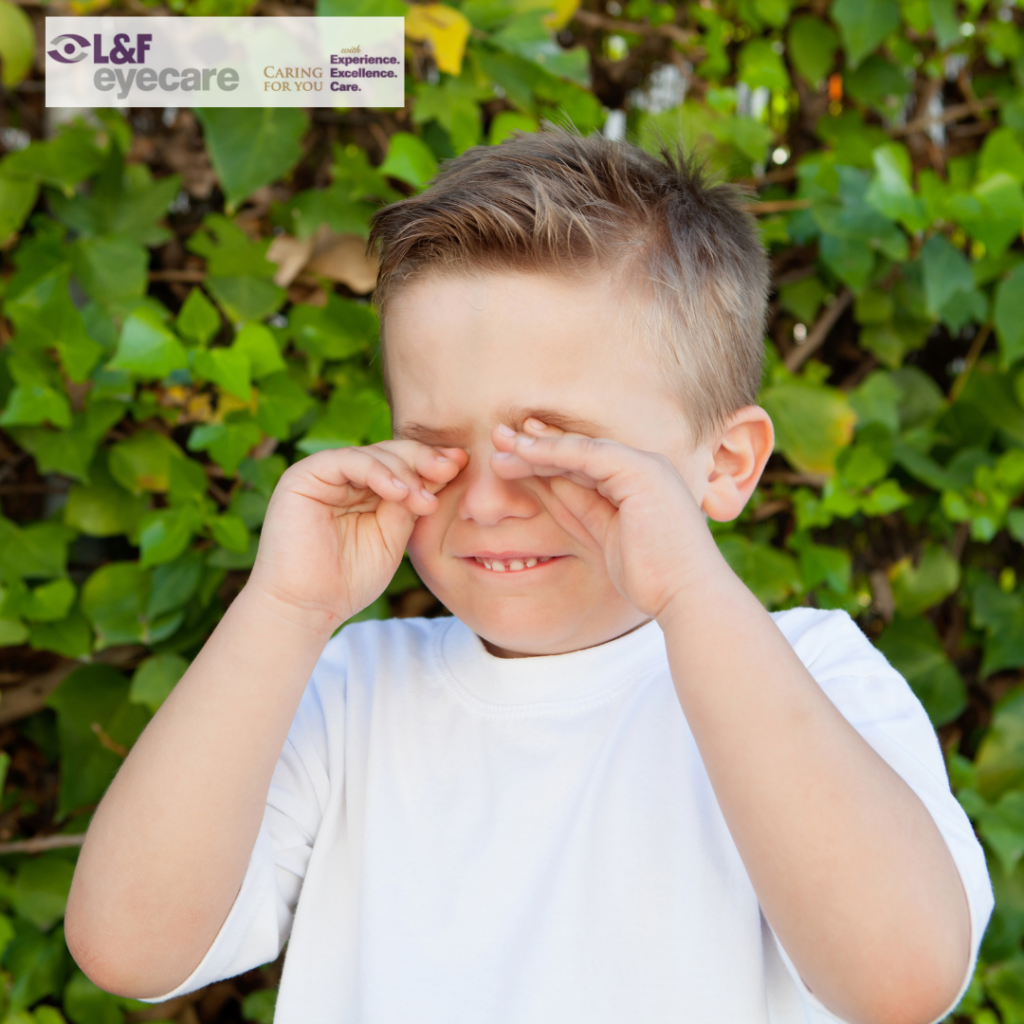Eye allergies and managing hay fever in Spring

Spring is nearly here! And while many of us will delight at the new floral blooms and warmer weather, others are suffering with tissues in hand and their inevitable spell of hay fever.
Medically known as allergic rhinitis, hay fever is a condition that causes inflammation of the sinuses after exposure to pollen, dust or other allergens.
More than one in five Australians has allergic rhinitis and most of them also experience associated allergic conjunctivitis.
Optometrist Professor Alex Gentle said the prevalence of allergic conjunctivitis was increasing in Australia, but new and existing treatments were available from your optometrist that can help make life more tolerable, especially for those suffering severe symptoms.
“Allergic rhinitis is more prevalent in Australia and New Zealand than almost anywhere else in the world, and the vast majority of individuals with allergic rhinitis also experience allergic conjunctivitis,” he said.
Professor Gentle was speaking at a conference on the weekend to optometrists about the need to co-manage patients with hay fever symptoms between doctors or pharmacists.
He said that health professionals need to co-manage more as symptoms should not be treated in isolation, and collaboration between optometrists, GPs and pharmacists is important to ensure the best possible overall treatment including antihistamines or steroid, along with eye drops from your optometrist.
He said prevalence of allergic rhinitis and ocular allergy are high in Australia, the United Kingdom and New Zealand.
“It is likely the case that our use of Northern Hemisphere grasses in our gardens explains why the UK, Australia and New Zealand have high levels of sensitisation,” Professor Gentle said.
‘Studies also indicate there is a genetic component and there are undeniable genetic links between Australia, New Zealand and the UK. Increasing pollution is also exacerbating symptoms.
‘However, while grass pollens are the major contributor to the development of seasonal allergic rhinitis or hay fever, some people’s allergies are not triggered by pollen. Rather they experience them all year round and the cause of this may be anything from dust mites in the home, to pet dander to other environmental allergens at work or home.’
Professor Gentle said although the primary presentation of allergic rhinitis was often hay fever, 90 per cent or more of sufferers also have symptoms in the eyes, with itchy, red and watery eyes being hallmark.
What are eye allergies?
Eye allergies are the response sensitive eyes have when they come in contact with an irritant or a foreign allergen. Allergies can affect both children and adults.
What causes eye allergies?
Common allergic substances include pollens as well as dust mites and animal hair. Seasonal allergies, like hay fever, are the most common cause of eye allergies and affect a lot of people. Common causes of seasonal allergies include grass and tree pollens. When the allergen comes in contact with the eye, the body automatically produces a substance called histamine, which results in allergic symptoms.
What are the symptoms of eye allergies?
Common symptoms include:
- red eyes
- watery eyes
- sore eyes
- itchy eyes
- gritty eyes
- sandy eyes
Children in particular will often rub their eyes or blink forcefully and repeatedly to relieve the itch symptoms. These allergy symptoms can present in one or both eyes although it is common for environmental allergens such as pollens and dust mites to present in both eyes.
Who should I see for my eye allergies?
People experiencing symptoms related to eye allergies should book an appointment, so we can assess and diagnose any itch, discomfort or irritation and provide appropriate treatment to relieve it. Your optometrist may also suggest speaking with your GP or pharmacist about complimentary treatment once the allergen has been identified.
